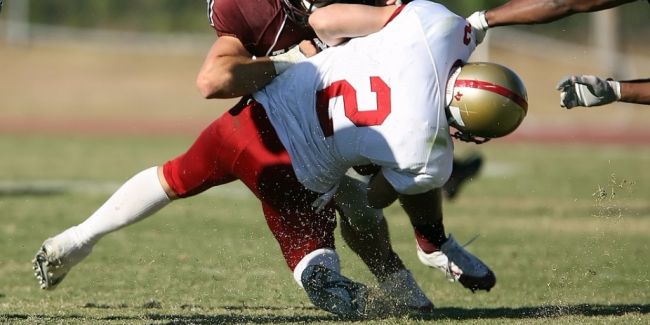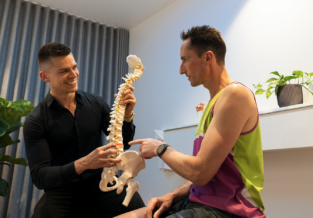The anatomy of an ACL injury.
Published on
18 Oct 2016

Call us on: (03) 9975 4133
Estimated to affect around 38% of all participants worldwide, knee injuries are some of the most prevalent issues in sport. Kirstie Tyson takes a detailed look into one of the most common injuries: the Anterior Cruciate Ligament (ACL) lesion.
The knee is a large, anatomically and biomechanically complex joint, where stability relies heavily upon supporting ligaments and tendons. Although we refer to it as a ‘joint’, the knee itself is technically comprised of three individual joints: the patellafemoral joint (or kneecap); the tibiofemoral joint (the main knee joint itself); and the superior tibio-fibular joint (which sits to the outside and just below the main knee).
Getting to know the knee.
Along with the major ligaments and supporting musculature, the knee also consists of two menisci. The menisci are semilunar shaped fibrocartilage which sit within the tibifemoral joint space. They function in both force transmission and joint stability.
The menisci serve to increase the contact area between the femur (thigh bone) and the tibia (shin bone) and to deepen the surface of the tibial plateau, which in turn increases the surface area. This decreases stress concentration, and protects the cartilage surfaces of the knee.
Menisci also function as secondary stabilisers by preventing abnormal motion between the tibia and femur, thus stabilizing the knee joint. Abnormal movement is a particular problem in a knee with a lax or ruptured ACL.
Understanding an ACL injury.
ACL injury is most commonly seen in change-of-direction sports (e.g. the football codes) and sports which require rapid deceleration on a fixed leg (e.g. netball or basketball), although injury can occur in anyone.
The ACL can be ruptured in many ways. The most common is through a twisting motion inwards (referred to as valgus force) with the foot planted on the ground away from the body, or with hyperextension of the knee.
Players with this injury typically report hearing a pop or crack, an inability to weight bear on the affected leg, and immediate swelling localised to the joint.
The anterior cruciate ligament itself is one of the main supporting structures of the knee. It provides approximately 86% of the primary passive constraint against anterior translation (forward motion) of the tibia on the femur as your leg extends. To a lesser degree, the ACL provides rotational stability too.
As a result, damage or rupture of the ACL results in changes in muscle strength, size, fatigability and activation (typically negatively in terms of the quadriceps).
Detailed ACL anatomy.
The ACL originates at the inner part of the anterior intercondylar area of the tibia and it frequently blends with the anterior horn of the lateral meniscus. Its insertion at this point is broad, being stronger and larger than the femoral insertion. The ligament winds on itself as it passes superiorly to attach to the medial surface of the lateral femoral condyle (the round prominent point at the end of a bone).
The ACL is taut throughout flexion to extension and is most lax at 30° flexion – half way between being fully extended and bent at a right angle. It also contains a larger number of proprioceptive mechanoreceptors, which provide important information in regards to balance, coordination and the body’s ability to sense its position in space, and joint position.
Treatment options.
The treatment of sporting knee injuries usually focuses on improving quadriceps activation, bulk and endurance. This is designed to assist in stabilising the knee. Other treatment techniques include, but are not limited to:
— Manual therapy
— Massage
— Dry needling, and
— Strapping
There is also a large emphasis on rehabilitation exercise using electromyographic (EMG) biofeedback, and proprioception and balance training.
***
As physiotherapists, we are ideally equipped to assess and treat a wide range of knee conditions, including both sports and non-athletic injuries.
If you’re having any kind of issues with your knee, get in touch with the team to experience our individually tailored treat-cure-prevent approach.


